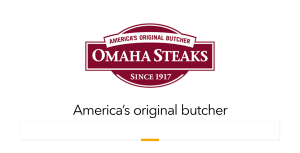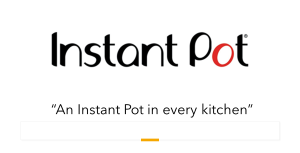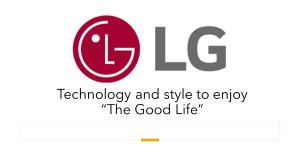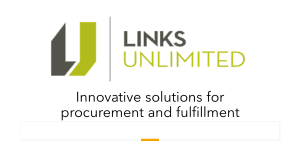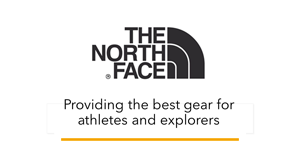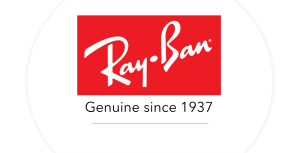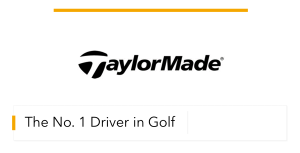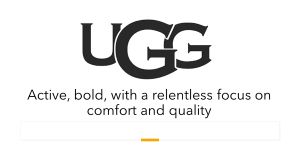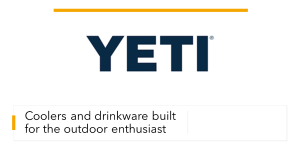IRR 2022 Mid-Year Market Report Finds Industry Poised for Continued Growth Despite Recession Risk
By Bruce Bolger
Market Potential
Competitive Landscape
Industry Support Suppliers
Despite dating back at least to the beginning of the 20th century with the creation of Premium Practice magazine, now Incentivemag.com, the Incentive, Recognition, and Rewards (IRR) field appears poised to not only continue its significant growth, but have the potential for hyper-growth. Only a small percentage of organizations in the US or elsewhere have a strategic and systematic approach to people management and engagement across the enterprise. Even fewer have established a formal Enterprise Engagement technology platform for managing employee and distribution partner relationships along the same lines as organizations today use Customer Relationship Management (CRM).
In anticipation of the upcoming Incentive Federation 2022 report in July providing an updated census of the trade, and to help organizations make sense of its implications, the Enterprise Engagement Alliance is publishing here an indepth market report that goes beneath the numbers to anticipate where the industry is going, through which players, and how.
Market Potential
The Incentive, Recognition, Rewards (IRR) business is comprised of incentive, recognition, loyalty, gifting, and event companies that use tangible and intangible rewards and recognition, technologies and methodologies to engage any stakeholders, including employees, customers, supply chain and distribution partners, communities, volunteers, donors, constituents, etc.
Overall trends. Here is compilation of what’s happening in the market as of July 2022.
- Continued growth. After a brief drop-off in the pandemic and continued softness in key hospitality sectors, the IRR business expanded rapidly during the pandemic as organizations used gifting, recognition, and incentives to connect with work from home employees. Leading incentive, recognition, and loyalty companies do not see signs yet of declined customer activity due to a possible recession. If organizations continue to focus on stakeholders with greater rigor than in the past and continue to invest in digitalizataion of engagement in the workplace, the industry could be poised for enormous growth, especially it is able to overcome its awareness issue. Gift cards performed well because their use bypassed the supply chain issues that affected the merchandise business.
- Uncertain loyalty point activity. There was a dramatic increase in points redemptions in loyalty points during the pandemic, and an unknown decrease if any in net loyalty points accumulation due to reduced travel and hospitality activity. On the other hand, there was a significant increase in online shopping for which people receive points.
- The group motivational event business suffered a severe blow due to the pandemic and is coming back strongly as fears recede—subject to some signs of hesitation about long-term planning due to perceived risks of serious new variants. The concept of hybrid meetings has shifted toward strategies to extend meeting reach rather than trying to hold two meetings. There does not seem to be a major shift away from the traditional keynote and panel discussion format, even though these formats are easily replicated in web meetings that can be viewed from the comfort of one's chair.
- Digitalization of engagement. More companies are moving toward a digital approach to engaging employees and other stakeholders in a manner similar to the way that Customer Relationship Management (CRM) helps companies engage customers. This could be a major driver of IRR growth, because tangible rewards will perform well when properly in used in programs that are analyzed.
- More integration and alignment of engagement tactics. Technology will make it easier for organizations to experience the benefits of better aligning all engagement processes from recruitment and onboarding stakeholders to assessment and feedback, ongoing communication, learning, job design, rewards and recognition, DEI, and more. Engagement technologies will need to seamlessly interface with the organization's communication platform of choice.
- Based on pressure largely from investors and human capital analytics linking people engagement with financial results, organizations are beginning to take a closer look at the money spent to engage people and the actual return.
- Continued mergers and acquisitions by companies purchasing competitors being sold by retiring owners; travel companies hurt by the pandemic, or companies with complementary services, such as the recent purchase of employee voice company WorkTango by Kazoo, a rewards and performance management firm.
- Continued increased involvement of promotional distributors in selling gifting and incentive programs. Based on the number of active customers of major fulfillment companies serving this market as well as surveys of promotional products distributors, there are no more than about 3,000 out of more than 20,000 active distributors who focus on selling brands for gifting, incentive, and event programs.
- Supply chain issues continue to recede, with many hoping for a near-normal fourth quarter.
- The blockchain has not yet had the anticipated impact in the traditional IRR business. Several companies are testing blockchain solutions in loyalty and incentive programs as well as in use in managing loyalty programs.
Potential obstacles to growth. The industry faces a combination of margin, distribution, cost-of-sales, and awareness issues outlined in this report that no one has ever successfully addressed. Many organizations, even divisions within large companies, continue to design their own incentive, rewards, and recognition programs, and purchase gifts at retail simply because they are unaware that there is a field of expertise related to program design and measurement or corporate channels for the purchase of awards in bulk and or for drop-shipping, including customization and personalization services to enhance impact. The players in the market have not deemed it worthwhile to make the collective investment necessary to build their category, as the advertising industry successfully accomplished in the 1950s and the CRM field did during the 2000s. And, even if they did, it is questionable what message they would agree on--one focusing on what they are selling--rewards and experiences--or what the customers is buying--enhanced performance, retention, willingness to recommend?
Market size. By any reasonable estimate, the IRR business is a large marketplace: the latest Incentive Federation study in 2022, recently highlighted at the Incentive Marketing Association conference, estimates total sales, including the large incentive travel and motivational events business, of $176 billion, up from $90 billion in 2015. Given that the most generous estimates of reward volume of all combined industry players doesn't even add up to $10 billion (see below), this study indicates that the vast majority of this industry moves through retail because business people have never heard of it. If each of the approximately 120 incentive, recognition, and loyalty companies in the US had annual sales of $100 million, which is highly unlikely, the "trade" portion of this industry total would be about $12 billion.
A major portion of the IRR field is comprised of the loyalty programs of the major credit card companies, which combined process around $4 trillion a year. If about 1% of that is rewarded in points, that totals $40 billion alone.
The new study estimates that at least 84% of companies use non-cash rewards or gifts. Another IRF study indicates that two-thirds of corporate gift cards are purchased at retail, an indication that most companies are not aware of gift card consolidators. Based on interviews with leading master fulfillment, incentive, gifting, and recognition companies, the industry experienced brisk growth during the pandemic, held back mostly by supply chain issues that are gradually getting resolved. Given that many participants in loyalty and other incentive programs redeemed points during the pandemic and have not earned as many points as a result of reduced hospitality activity, there is uncertainty about redemptions in this large category of the industry in the coming year.
A significant portion of the non-travel IRR industry, perhaps one-third, consists of loyalty programs for consumers, best known in credit cards and hospitality but prevalent in small businesses as well.
Despite continued growth in the market, there have been almost no new entrants to the IRR field, with the exception of in the gifting technology and payments world. The number of incentive, recognition, and loyalty companies is stable.
The margin issue. When discussing the size of the market, it’s important to remember that the traditional measures of sales in this industry report what companies pay for the awards, not the net sales after payments to the brands, gift cards, or travel suppliers. From the point of view of the incentive, recognition, loyalty, and master fulfillment companies, they only profit from a portion of the gross revenue paid for the awards, usually no more than 20% of the cost. So, when an incentive company says it has sales of $100 million, that usually means that it’s net sales before operating and other costs are $20 million. Most companies will not pay for per-seat charges for technology or advisory fees for program design and return-on-investment measurement, or advanced analytics.
Average budget estimates. According to the Incentive Federation 2016 study, the average annual spend for a company with sales of $5 million to $9.9 million is $42,000 for employee awards; and for companies up to $100 million in sales, $91,000. Note that the number is somewhat higher for sales and channel programs. These numbers are likely to rise in the upcoming Incentive Federation report, whose details have not yet been released.
Recessionary impacts. The merchandise and gift card aspect of the IRR rewards business has demonstrated resiliency during recessionary periods. Owners of master fulfillment and incentive companies active at the time of the Great Recession sale that sales did not actually decline but slowed sharply. While the immediate reaction during the pandemic caused a sharp down turn, the business quickly rebounded in all areas, including consumer, employee, sales and in many cases dealer programs, except in industries hit hard by supply chain issues. The travel sector is far more subject to both recessionary and safety issue, and was hit hard by the pandemic, shifting large to individual travel awards or merchandise. This also had a significant effect on the event gifting business, which has since seen a big rebound. The gambling event gifting business was apparently less hard hit because of the use of online gifting events during the height of the pandemic.
Industry players. Despite the enormous market potential, there are no more than 150 incentive, recognition, motivational event, and loyalty companies in the US who combined do not appear to have more than about 10,000 customers or no more than $9 billion in combined sales. This includes incentive, recognition, loyalty, and corporate gifting companies that in some casesare involved with motivational events. (The number of solution providers grows significant when one counts all the players in event marketing and the broader field engagement—from assessment and talent branding to rewards and analytics.) The promotional distributors and other companies that sell incentives and do so on behalf of current industry players, either incentive or master fulfillment companies, so one must be careful not to double-count sales. The same applies to the sales of brands and retailers, who are unable to track the large volume of corporate sales that flow through their consumer divisions.
Role of brands and retail gift cards. The leading brands and retail gift cards serving the market significantly cut back on their investments in the corporate market after the Great Recession, in most cases outsourcing their corporate business to third-party master fulfillment or gift card consolidators. Because few brands or retailers can track more than 10% of their sales coming through the corporate channel, they seem fit to let unknowing corporate customers purchase through their retail divisions. Given the significant growth opportunities in the corporate engagement market, and the softening retail business, it’s possible that brands and retailers will take a fresh look at this traditionally profitable and resilient marketplace. Twenty years ago the industry had two large trade shows and three active print publications because of the sales and marketing activities to support their brands. Today the industry has no standalone national shows, with the exception of small boutique or regional shows and pavilions at promotional products shows, and arguably only one media company (RRN) regularly focusing on the field.
Financing of the entities. To date, no company in this field has ever scaled to the level of going public, or at least for long. The most sustainable market entrants are not venture capital or private equity funded, but rather boot-strapped by passionate entrepreneurs or developed by traditional incentive and recognition companies with established clients. Beginning with the 1990s the dot-com era, almost all well-funded launches have failed. The most notable Silicon Valley-funded entrant, Achievers, was sold back to its management for pennies on the dollar. Dublin-based Workhuman, the one company that tried to go public, was unsuccessful in its effort and is now private equity owned. Those handful of companies funded by private equity have in many cases already gone through the first sales cycle up until the pandemic without any signs yet of anyone going public. The largest companies do not appear to have achieved the $1 billion mark, and if they do it’s based on gross revenues for awards or travel for which the margins often average no more than 10% to at best 20%. Many companies in the gift card business especially have business models based on breakage, meaning it's impossible to know specifically what they will earn.
The type of financing behind companies is significant because private equity and venture companies generally are more interested in scale based on the ability to automate processes, whereas performance improvement, if successfully implemented and measured, requires more hands-on expertise less easy to automate. Management consulting services generally are not a hot button with technology venture capitalists and HR tech companies.
The role of venture capital and private equity in the US market. The most notable company and perhaps only company that has raised venture capital funds in recent years is Awardco.com, an originally bootstrapped reward and recognition platform that recently raised $65 million at a valuation of $900 million. This apparently is the largest Series A funding in HR SaaS history. The funding was led by General Catalyst and Ryan Smith, employee experience platform Qualtrics co-founder and Utah Jazz majority owner. Dublin-based Workhuman is funded by Atlas Venture and Balderton Capital.
Prizeout, the digital gifting and payouts company, also has received venture capital funding from Precept Capital, Mark Cuban, Continental Investment Partners, and others. A recognition company known as Fond has received funding of $25 million since its formation in 2012 and reports that it now has annual sales of $25 million and about 500 customers. Kudos.com has received some support from a government agency in Canada.
In the private equity arena, Reward Gateway is now backed by Abry Partners and Castik Capital, which purchased the interests of Great Hill Partners. Engage2Excel in Statesville NC, and its Hinda Incentives division are owned by Comvest Partners, and CarltonOne Engagement, backed by HIG Growth Partners. Employee engagement platform Kazoo, which recently acquired WorkTango, is backed by Vista Equity Partners. Blackhawk and Incomm are private equity owned consumer gift card processers that are active in the corporate market and have made multiple acquisitions in the gift card field.
Numerous venture capital companies financed loyalty and other stakeholder engagement platforms during the dot-com era and every one of them failed for the reasons explained below. The most notable venture investment after the dot-com bust was in the recognition company Achievers, which was backed by Sequoia Capital in a series of rounds starting in 2007. It was later sold to Blackhawk for $150 million, which later sold it back to management. Workhuman, recognition firm, scrubbed a plan to go public in 2014, with industry rumors that it plans to have a go at it again.
Mergers and acquisitions. As predicted by the EEA when it’s Engagement Agency created a boutique mergers and acquisition business serving this market, the IRR field has seen a steady increase in mergers and acquisitions among mid-size to smaller companies buying from founders ready to cash out. There are also increasing signs of vertical integration, such as the recent purchase of WorkTango by Kazoo. In this vein, one could anticipate a merger between Awardco and employee experience company Qualtrics, or its acquisition by Amazon, its leading reward supplier. Engagement company ITA Group purchased Chadwick Martin Bailey, a research firm, several years ago as part of a vertical integration strategy.
Industry challenges. Here is an overview of the reasons why it is difficult to scale in the IRR market and which helps explain the relatively minimal involvement of venture capital and private equity firms or the lack of new entrants.
1) High cost of sales. Because no has yet successfully marketed a truly DIY engagement approach, the traditional sales approach requires educated salespeople with usually at least several years of experience at a cost of over $100,000 per year.
2) Long sales cycles. It can easily take three to six months with multiple phone calls and proposals from initial contact to close a sale. Then, it can take months or more until companies start using the platform.
3) Difficult to target buyers. There is generally no way to know who in an organization can be a buyer because he or she could be in sales, marketing, HR, or administration, nor much seasonality in terms of deciding upon platforms. (There is a lot of seasonality on gifting and redemptions—about 70% in the fourth quarter.) The few who have tried mass advertising to date, such as advertising in the Wall Street Journal, have not achieved an ROI. Workhuman is now running television ads, probably the first of any company to do so in this marketplace. This is what is prompting rumors of a second try at a public offering.
4) Unpredictability. Because organizations often take a tactical approach to engaging key audiences, new opportunities can come out of seeming nowhere, making it difficult to forecast cash flow.
5) It’s an unknown business. The IRR field is not taught in schools or talked about in the media, so most companies just go to their local retailer when buying gifts or rewards and give them out or send through the mailroom. As a result, companies hesitant to pay for advisory services or fixed technology costs. Click here for a recent IRR industry town hall video meeting on the subject. With Workhuman and promotional products companies like 4imprint.com using television and radio advertising, awareness levels could rise.
Market Potential
Besides the growth in rewards and gifting because of the labor shortage and high employee turnover—4.5 million US Americans changed jobs in April 2022--there already exists a large market for the IRR field that is moving through retail and individual expense accounts. The challenge for the IRR field is not to create demand, but to divert the retail market to a digital platform. The success of the IRR field will be based on the pace of digitalization of business gifting and employee engagement and the ability to educate end-users, their agencies, and their advisors on the benefits of using technology and services rather than purchasing through retail. Since companies traditionally have handled gifting through retail sources and managed the tracking through expense accounts, the major challenge is to reach the right management audience with the right message and to make it easy for them to get started down the digital path by demonstrating the measurable advantages.
Market estimate. There are two ways to arrive at the estimated market potential of at least $90 billion in merchandise, gift cards, and technologies. These calculations are based on the 2016 Incentive Federation study, which shows a 49% increase over 2016 numbers, so these estimates can be considered conservative.
Method 1. The Incentive Federation annual studies. The last study conducted in 2016 estimated that the market size in 2015 was $90 billion. While the study does not provide a precise breakdown, it’s safe to estimate that about half of that volume or $45 billion is for non-cash rewards, such as motivational events, bringing the merchandise estimate in around $45 billion. It is likely the upcoming Incentive Federation report will show a significant increase, so even a significant discount for skeptics puts the market in the tens of billions of dollars. If one adds the estimated $40 billion or so in credit card loyalty awards, that supports the $90 billion IFI estimate.
Method 2. A thumbnail marketplace potential and actual. Based on an estimate that $25 million being the average sales volume of the 220,000 companies with sales of over $10 million and that they spend on average 1 percent of sales on non-cash gifting and rewards for both employees and customers, that averages $250,000 per customer. If every company spent at that level for merchandise and gift cards, the total market would be $55 billion. However, Incentive Research Foundation studies have found that 15% of companies do not use non-cash rewards, putting the estimate at $40 billion. Again, at the $40 billion estimate for loyalty programs and the number reaches $90 billion.
Either way, as detailed below, the total volume moving through the trade outlined below likely is no more than $10 billion, under 25% of the total rewards business—the rest moves through retail because few businesspeople have ever heard of this business or because the orders are made on an ad hoc basis and not on a corporate gifting or reward platform. By comparison, the field of CRM is estimated to total over $65 billion.
Why the IRR field is so little known. As explained in this article in RRN, there are multiple reasons why such a large business remains unknown. A major reason is economics. Because of low margins, and inability to charge management fees, the IRR industry has traditionally focused on the largest companies, those with sales generally of over $100 million. Another contributing factor is that many of these IRR companies are boutique, sales-driven organizations with limited funds who have rarely thought to work together to collectively promote the field. The few large companies, Maritz, ITA Group, and BI Worldwide have generally not seen fit to collaborate as the advertising industry did to build its brand.
The potential lies in educating organizations of the value of centralizing all gifting on a single platform and promoting and tracking the specific types of behaviors being rewarded. Awareness could also grow as a result of television advertising by companies such as Workhuman and 4Imprint.com.
Competitive Landscape
All the competitors for your gifting and employee engagement platforms in the US focus on one of three approaches with various business models outlined below.
A major issue involved with comparing companies is the lack of formal definitions related to technology and services. What is Enterprise Engagement technology, versus rewards and recognition, and gifting? Also, some people conflate employee engagement survey, feedback, and "experience" software from companies like Qualtrics, Limeaide, Engagement Multiplier, and CultureAmp, or even with Teams, Slack, or Yammer. This article contains a checklist to help evaluate the difference between different technologies using the term “engagement.” What is the difference between a reward supplier and a full-service engagement agency? You can find an overview of all the different types of engagement solution providers here.
1) Gifting and thank you platforms. These platforms make it simple to send gift gifts of all types with minimum friction. Major players include: Prizeout, Sendoso, Giftya, CarltonOne GRS Gift Codes, 1-800FLOWERS.com, Links Unlimited, GGIWW, among about 250 overall companies in the category, according to Capterra. These companies do not by definition apply any other engagement support services, advisory or otherwise. This is the only category of solution providers showing a significant increase in new entrants.
The general proposition. Great rewards, seamlessly delivered and easily tracked.
Most frequent business model. one-time setup fee (waived based on requirements and anticipated volume); markup on the rewards; a small monthly support fee based on bandwith requirements, customization fees.
Most frequent distribution models. Direct to consumer (1-800FLOWERS.com); social media, remarketing, and trade shows; promotional products distributors, direct sales.
Market estimate. Estimating based on published reports that 1800FLOWERS.com generates $120 million per year alone in this category, it’s safe to say that the combined companies above produce no more than about $3 billion in gross rewards income, compared with an estimated overall marketplace of at least $45 billion.
2) Employee engagement/recognition platforms with varying degrees of support services and technologies:
OCTanner, CarltonOne, Achievers, Workhuman, Inspirus, RewardGateway, Awardco, Kazoo, Engage2Excel, Kudos, CAShort.com, Blueboard, Halo, Terryberry, Recognation (part of Baudville), MTM Recognition, Point Recognition, and All Star Incentive Marketing, in many but not all cases traditional recognition or incentive companies that now provide recognition technology and related services. They are distinguished from gifting platforms in that these focus more on recognition and provide more support services in terms of marketing and communications or program design. Most rely on Internet advertising, direct sales, and some trade shows for business development. These programs provide various degrees of inhouse support for communications, graphics, research, on-site deployment, etc.; i.e., a full-service solution. At least four companies support resellers with customizable technology: CarltonOne, Workstride, Paramax, Motivation Technologies, Bakkt (formerly Bridge2Solutions), and Motisha, based in Belgium but serving US customers.. About 25 companies describing themselves as employee engagement technology exhibited at the recent Society for Human Resources Management show. Underlining the mergers and acquisition activity in the field, Workstride was purchased by PrePaid Technologies, a payment management company that intends to incorporate engagement technology into its payment systems. (While this is speculative with no confirmation from the companies involved, the sale of Workstride by a private equity company to an industry player rather than another private equity company could be a signal that WorkStride did not grow at the desired pace.)
The general industry story. The companies say they provide employee engagement applications offering tangible and intangible rewards and social recognition and badges for length of service, attendance, and other goals. There is very little discernable differentiation in their stories based on their web sites. As a result, a lot of the players participate in industry association and media awards programs and promote their ratings and awards as a point of differentiation.
Most frequent business model: Set up, customization, hosting fees based on bandwith requirements, and sometimes SaaS fees at no more than $5 per seat if they are lucky, with big discounts for volume; plus fees for merchandise and gift cards and customization. Many companies also earn money on breakage, unredeemed rewards/gift cards.
Most frequent distribution models: Direct sales, social media, remarketing, some advertising and trade shows; a few through resellers.
Market segment volume. While all these companies are privately held, it’s a safe bet that their total sales do not exceed $3 billion combined, given what we do know about the sales of these companies.
3) Incentive and loyalty companies with their own or licensed technologies. Maritz, Loyalty One, ITA Group, BI Worldwide, Augeo, Motivation Excellence, EGR International, Rymax, CXLoyalty, HMI Performance Incentives, One10 Marketing, NextLevel Performance, Incentive Services, Frosch, Hinda, Partners for Incentives, All Star Incentive Marketing, Xceleration, Quality Incentives, Black Forest, Motivforce, Incentco, Incenta Rewards, Incentra, Boost Engagement, Incentive Team, etc. have invested in their own priority platforms or private label technologies designed for enterprise customers. A search of the Incentive Marketing Association directory comes up with about 95 members describing themselves as incentive companies, many of which are in fact suppliers of rewards and do not provide the level of technology and support services provided by an incentive company.
The general story. Same as employee engagement: Most focus on the reward experience and ease of use with little talk of specific performance improvement beyond generalizations. It is hard to find big differences between these companies. None that we could find make any reference to the stakeholder management, human capital reporting or Environmental, Social, Governance (ESG) movements.
Most frequent business model: Set up, customization, hosting fees based on bandwith requirements, and sometimes SaaS fees at no more than $5 per seat if they are lucky, with big discounts for volume; plus fees for merchandise and gift cards and customization. Many companies also earn money on breakage, unredeemed rewards/gift cards.
Most frequent distribution models: Direct sales, social media, remarketing, and trade shows; a few through promotional products distributors.
Market segment volume. While all these companies are privately held, it’s a safe bet that their total sales do not exceed $3 billion combined, given what we do know about the sales of these companies.
Other Industry Players
A variety of other companies play a role in the IRR market. There has been little increase in the number of these players over the last few years. Several new brands have made their products available for corporate distribution through master fulfillment companies, and a few incentive travel companies have merged with others.
Brand and retail corporate sales. Most major brands and retailers were major supporters of the market until the Great Recession. During that time, most scaled back their corporate sales departments and outsourced the sales and marketing to master fulfillment companies and gift card "consolidators" that handle their sales to the corporate market. This has significantly reduced their marketing support for the corporate world, since master fulfillment companies have only small budgets for marketing. Given that retail sales are now softening, and many brands are holding increasing levels of inventory, it is possible some brands make take a fresh look at what traditionally has been a resilient, profitable market that provides significant marketing exposure to employees and consumers. Since many companies have never heard of this mearket, they gladly give away products and service for exposure in movies, overlooking the significant exposure they get in loyalty, incentive, and recognition programs for which they get paid.
Motivational event companies. In addition to the incentive companies outlined above, almost all of which have travel divisions, the market consists of dozens of specialists in motivational events, including companies such as Creative Group, Brightspot, Fire & Light Group, Lorandus Meetings and Communications, as well as an array of companies in the event marketing field.
Master fulfillment companies. Several dozen stocking distributors provide brands and in some cases promotional products, customization, and personalization, mostly in support of the solution providers outlined above. Most of these companies grew through the pandemic, with their largest problem being supply chain issues, logistics, and inflation, not demand. None publicly advertise a willingness to sell to corporate end-users but focus they say on the reseller market, which includes incentive, recognition, loyalty, promotional products, and the gifting companies listed above. Almost by definition, these companies provide little in the way of incentive or gifting technology, as they leave that up to their reseller customers. These companies greatly benefited from the retreat of leading brands and retailers from the corporate market during the Great Recession, when these companies decided to effectively shut down their corporate sales and marketing departments and outsource the business to master fulfillment companies. These companies are distinguished from incentive and loyalty companies in that have warehouses and hold inventory for drop-shipping; they generally do not sell to end-users and most do not provide any program design or technology support beyond rewards fulfillment. Most support event shopping programs; a few provide basic gifting platforms.
The leading companies include Links Unlimited, Power Sales, Incentive Concepts, Harco Incentives, Innowave, GGIWW, Pro Am, Premco, Kleerwest, O'Rourke, MAS, National Incentive Brands, PMC/Almo, Top Brands, Earth Gear Corp., among others.
Gift card companies. Gift cards are almost always redeemed in higher percentages of merchandise in incentive, recognition, and loyalty programs, even though research indicates that tangible rewards can, when properly selected, create a higher impact. This category generally thrived during the pandemic with the exception of brands in hospitality. Most major brands have gift cards with small departments that rely on gift card consolidators to handle the corporate market. (Most people purchase gift cards for business at retail because they are not aware of the corporate channel.) The IRR industry is composed of gift card consolidators offering end-users access to multiple brands, such as Blackhawk Network, Incomm, SVS, Stoner Bunting, RPG, and Gift Card Partners, and specialists, such as Pulse Experiential Travel, whose gift cards featuring indivudual travel experiences good for three years have reportedly thrived through the pandemic. Other specialist players are Ticket Jones, Global Hotel Card, and Rowards. Most of these companies can be found on the directory of the Incentive Marketing Association.
Incentive representatives. About 50 companies in the US represent the brands still active in the corporate market. They specialize in helping solution providers and their end-users in the bulk purchase of brands for events or for drop-shipping in incentive, recognition, and loyalty programs. These companies include: Great Lakes Incentive Group, Incentive Source, Hoffman & Edgette, Carlisle Marketing, Pilgrim Promotions, and about 40 others that can be found on the online directory of the Incentive Manufacturers Representatives Association.
Education, Certifications, and Information to Activate
Brand Media and Enterprise Engagement
A complete learning, certification, and information program and a course syllabus for educators.
Resources: The Brand Media Coalition, the only guide to the story-telling power of brands and where to source them for business, event, promotional gifting, and rewards and recognition. Enterprise Engagement Solution Provider Directory. The only directory of engagement solution providers covering all types of agencies and tactics as well as insights on how to select them.
Communities: The Enterprise Engagement Alliance and Advocate and the Brand Media Coalition free resource centers offering access to the latest research, news, and case studies; discounts, promotions, referrals, and commissions, when appropriate to third-party solution providers from participating coalition solution provider members.
Training and Certification
Enterprise Engagement Alliance Education: Certified Engagement Practitioner; Advanced Engaged Practitioner, and Certified Engagement Solution Provider learning and certification programs on how to implement Stakeholder Capitalism principles at the tactical level.
International Center for Enterprise Engagement: The only training and certification program for ISO 30414 human capital reporting and ISO 10018 quality people management certification.
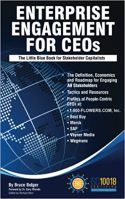
The EEA offers a complimentary course syllabus for educators.
In Print:
This is the definitive implementation guide to Stakeholder Capitalism, written specifically to provide CEOs and their leadership teams a concise overview of the framework, economics, and implementation process of a CEO-led strategic and systematic approach to achieving success through people. (123 pages, $15.99)
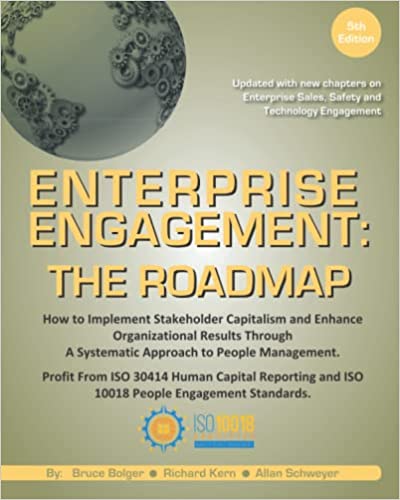
The first and most comprehensive book on Enterprise Engagement and the new ISO 9001 and ISO 10018 quality people management standards. Includes 36 chapters detailing how to better integrate and align engagement efforts across the enterprise. (312 pages, $36.)
Online:
10-minute short course: click here for a 10-minute introduction to Enterprise Engagement and ISO standards from the Coggno.com learning platform.
Services:
• The Engagement Agency at EngagementAgency.net, offering: complete support services for employers, solution providers, and technology firms seeking to profit from formal engagement practices for themselves or their clients, including Brand and Capability audits for solution providers to make sure their products and services are up to date.
• C-Suite Advisory Service—Education of boards, investors, and C-suite executives on the economics, framework, and implementation processes of Enterprise Engagement.
• Speakers Bureau—Select the right speaker on any aspect of engagement for your next event.
• Mergers and Acquisitions. The Engagement Agency’s Mergers and Acquisition group is aware of multiple companies seeking to purchase firms in the engagement field. Contact Michael Mazer in confidence if your company is potentially for sale at 303-320-3777.
Enterprise Engagement Benchmark Tools: The Enterprise Engagement Alliance offers three tools to help organizations profit from Engagement. Click here to access the tools.
• ROI of Engagement Calculator. Use this tool to determine the potential return-on-investment of an engagement strategy.
• EE Benchmark Indicator. Confidentially benchmark your organization’s Enterprise Engagement practices against organizations and best practices.
• Compare Your Company’s Level of Engagement. Quickly compare your organization’s level of engagement to those of others based on the same criteria as the EEA’s Engaged Company Stock Index.
• Gauge Your Personal Level of Engagement. This survey, donated by Horsepower, enables individuals to gauge their own personal levels of engagement.
For more information, contact Bruce Bolger at Bolger@TheEEA.org, 914-591-7600, ext. 230.






